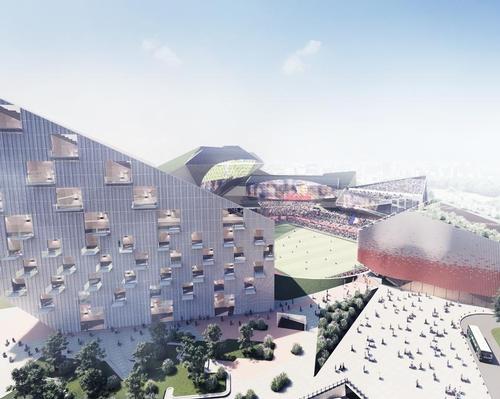29 Jan 2020
Buro Ehring's Hidden Stadium concept is an urban micro-city
BY Stu Robarts

Buro Ehring's concept for a stadium with a sunken pitch that is hidden by an eclectic group of buildings surrounding it has won the 'Staydium: Stadiums that live beyond sports' design competition.
The competition brief was to create a conceptual design for a stadium for Montpellier, France, that could be used for international events beyond just sports.
It sought to find ideas for ways in which the future use of any eventual stadium could be safeguarded through a mixed programme to avoid it falling out of use.
Buro Ehring's The Hidden Stadium is described as "an urban micro-city with a stadium at its core", which is a self-sufficient destination in itself, rather than needing to be connected to the city, emphasising placemaking over iconography.
“The design concept is to create a new urban focal point and place of gathering for the city of Montpellier, that just so happens to have a 30,000 seat stadium at its core – as opposed to the other way around; a standalone, imposing and pervasive stadium structure, which is so prevalent in today’s urban design of stadiums and arenas," explained Ryan C. Cramer, project manager at Buro Ehring.
The "hidden" pitch is sunken 30ft (9m) below the ground, with large curved screens overlooking it that are set into the sides of the five sculpturally-shaped surrounding buildings that variously house a museum of wine and distillery, an entertainment complex, mixed-use housing and commercial facilities and auxiliary services for the stadium.
Public spaces around the stadium, meanwhile, create a semi-permeable urban fabric that encourages visitors to meander and explore the area.
"It’s up to our cities to provide interesting, usable, and enjoyable urban spaces for their people," said Holger S. Schulze-Ehring, principal at Buro Ehring.
"The stadium, a special focal point for sporting events and beyond, is completely integrated with the urban fabric. This contextual connection elevates the very buildings which form its shape and the entire surrounding districts. We believe this serves as a blueprint for future developments in entertainment and urban planning."
Close Window